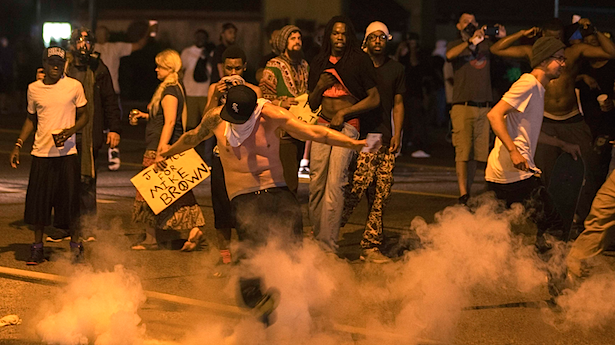Are Riots and Conflicts Staged, Made Fake by News Media?
 Mainstream media has the power to go beyond just reporting the news. Public opinion is shaped and galvanized. Yes, politicians are part of the public, watching the same coverage night after night. Polls determine campaign strategies and rhetoric.
Mainstream media has the power to go beyond just reporting the news. Public opinion is shaped and galvanized. Yes, politicians are part of the public, watching the same coverage night after night. Polls determine campaign strategies and rhetoric.
We all remember how the media took a decidedly anti-war stance during the Vietnam War. Protestors got most of the attention. Make love, not war, was the zeitgeist byword. Young men taking off for Canada were news heroes.
The Watergate scandal sealed the fate of “just reporting the facts” once and for all. News organizations now had a messianic mission, though disguised as investigative journalism. Liberals were in, conservatives out. It hasn’t changed over the decades.
In his article “Fix Ferguson by Getting Rid of the Media,” Daniel Greenfield argues that protest movements and conflicts actually play to the media: “Remember that every time you see a masked protester caught in the act of throwing a rock or a loving couple huddled in fear of dark masked shapes in riot gear, these images are as artificial and posed as anything in an Abercrombie and Fitch catalog.” The media gets what it wants.
There were so many hip reporters crowding into Ferguson that the social chemistry of the event was seriously skewed: “There are so many reporters in Ferguson that the rioters and looters can use them as human shields. You just wouldn’t know it because they don’t take pictures of each other. The occasional photos of media scrums around a crying woman in the Middle East or an angry protester in Ferguson reveal the artificiality of the event. It’s okay to have one reporter in front of a camera, but when there are so many reporters at an event that they outnumber everyone else, the whole thing starts looking like a movie set on which events are staged for the entertainment and profit of the producers.”
Just fine with the media. All the white reporters gave the appearance of social diversity, a cardinal virtue in the progressive utopian vision. The reporters can cherry pick whatever image seems to pander to media sentiment, allowing cameras to linger on scenes that were staged just to make a political point with television viewers.
But it isn’t just about politics. Advertising money based on viewer ratings drive the business machinery and bottom line: “Conflict is the vital fluid of any narrative. Take away the conflict and there is no longer a story. Without a bleeding wound, the swarming media mobs toting cameras, microphones and iPads will follow the trail of blood to their next story.”
 Mainstream media has the power to go beyond just reporting the news. Public opinion is shaped and galvanized. Yes, politicians are part of the public, watching the same coverage night after night. Polls determine campaign strategies and rhetoric.
Mainstream media has the power to go beyond just reporting the news. Public opinion is shaped and galvanized. Yes, politicians are part of the public, watching the same coverage night after night. Polls determine campaign strategies and rhetoric.